|
Why is Conga Santiaguera important?
Because conga is essential to carnival in Santiago de Cuba --“sin conga no hay carnaval. Santiago has Cuba’s biggest and best carnival (Just ask any Santiaguero!); it is legendary throughout Cuba. And Cuba is the biggest island in the Caribbean; Santiago is a truly Caribbean city, while Havana faces the straits of Florida. Santiago’s carnaval is among the Caribbean’s, and the world’s, major festivals. Santiago is Cuba’s second most populous city, much smaller in population than Havana, but carnival is much more important to Santiagueros than it is to Habaneros, with a higher level of active participation. Since the 17th century, carnival in Santiago has consistently been in late July, centered around July 25, día De (day of) Santiago Apóstol, the patron saint of the city . Carnival in Havana currently occurs in the summer but the date varies; before the 1959 revolution it took place in February or March to coincide with the last days before Lent. It was also associated with January 6: El Dia de Reyes or Three Kings’ Day, when slaves and free people of color were permitted to parade with their African drums and songs. What is Conga? The word conga has at least three meanings (not counting the “conga drum” which is known as tumbadora in Cuba). It is a lively, drum-laden genre of Afro-Cuban music generally associated with carnival and street parades; regional variants include the conga Santiaguera, Camagüeyana, Habanera and Matancera. Conga also refers to the ensemble which plays this style: for example, in Santiago: La Conga de Los Hoyos, La Conga San Agustin, etc. Throughout Cuba these groups can also be referred to as comparsas depending on the performance context and region. In Santiago, a conga is also a sprawling, chaotic, mass of a few thousand people that surrounds the musicians in the streets. The expression “meterse en la conga” (literally “insert oneself in the conga”) means to become part of this mass, not necessarily to march amidst the musicians. The conga as an informal spontaneous street parade is an essential part of Santiago's culture. Conga for Santiagueros is much more than a rhythm or a band: it's an annual ritual, sweaty street party; it's rum, rebellion, Afro-Cubanidad, arrollando (a gyrating street dance), fights, and guapería (bravado). Conga Santiaguera is not as well known as the Conga Habanera (which is often called “comparsa” by musicians). The famous (?infamous?) “1,2,3 kick!” of the “conga line” comes from the Conga Habanera. Even Trio Matamoros' famous tribute, “Los Carnavales de Oriente" is done to a Conga Habanera rhythm. The Conga Habanera is more famous because Cuba's capital has always dominated its music and media industries, and therefore shaped perceptions of Cuban music and culture outside the island. Havana's Conga, like other Afro-Cuban styles from Western Cuba, is more familiar to musicians outside the island; it has been studied, taught and transcribed more. We at laconga.us hope to change that: our primary mission is to spread the word about the conga santiaguera. I'll close with a couple of quotes: From https://www.ecured.cu: "La conga en Santiago de Cuba (Conga Santiaguera), es para los cubanos un acontecimiento trascendental con un significado muy bien definido. Cuando se menciona la palabra “Conga”, es como si se hubiera dicho ¡A Gozar!" The conga santiaguera is, for Cubans, a transcendental event with a well defined meaning. The word ”conga” is synonymous with “party!!!” From http://www.cultstgo.cult.cu: "Cuando se ha hablado del Carnaval refiriéndose a Cuba se ha pensado siempre, primera y principalmente en los de Santiago de Cuba." When people talk about Carnival in Cuba, they always remember, first and foremost, Santiago de Cuba.
0 Comments
Before YouTube, commercial audio recordings were primary source of information for musicians, much more so than today. This post will look at commercially released recordings (vinyl and CD) of conga santiaguera; some of these are labled as "conga oriental" so I'll attempt explain these two terms. Oriental or Santiaguera? The term Oriente refers to the Eastern region of Cuba; it was a province until 1976 when it was split up into Las Tunas, Granma, Holguín, Santiago de Cuba, and Guantánamo Provinces. My limited research indicates that the conga rhythm as it is currently played in Oriente is mainly derived from the Santiaguera style with its characteristic tambora (bass drum) accent right before the downbeat. Of course, different cities in the region have their own styles and variants; for example, Guantanamo's congas seem to use four bells (instead of three as in Santiago) and sometimes have a brass section instead of a corneta china. The terms I prefer are: santiaguera if its from Santiago or mostly based on that style; oriental to refer to a style from Oriente outside of Santiago. 1. Conjunto Corneta China: Conga en Oriente /Goza Mi Conga This recording was originally issued as a 78 by Panart, probably in 1950 if we assume their catalog numbers are consistently in chronological order. It was also reissued as a 45, probably some time in the late 1950s. Ironically it is in a non-traditional “band” format with a piano and bass in addition to percussion, vocals, and the trademark corneta china. The percussion instruments are probably not all from a traditional conga: they sound like cowbell, conga drums and one or more bass drums. It is very likely that the corneta player and some of the percussionists are from La Conga de Los Hoyos, who, according to an informant cited here, visited Havana in 1950 and rehearsed a few blocks away from the Panart studio. It seems odd to me that percussionists from Los Hoyos would not use to their own traditional instruments to record, but its difficult to verify if the musicians at this session were indeed from Los Hoyos. According to an article by Rolando Antonio Pérez Fernández , there was a group known as "La Corneta China" that performed at a Santiago carnival dance in 1941, but it is very unlikely that this same group traveled to Havana or recorded at all. A web search for "Conjunto Corneta China" invariably leads to the Panart recording. It is much more likely that this recording was made by a "pick up" group of Havana session musicians, and probably the corneta player and some percussionists from Los Hoyos. In addition there is little if any evidence that the corneta china was used by comparsas in Havana at this time. The pianist, who solos on both tracks, sounds familiar to me and is probably someone that appears on other Panart recordings: maybe Julio Gutierrez or Perchuin. Despite the absence of some of the traditional percussion instruments, the over all rhythmic feel of the recording is authentic enough to consider it a “true” conga Santiaguera. Side A: “Conga en Oriente” The track starts with a typical rubato corneta call and drum/percussion roll. After a few measures of corneta soloing over percussion, bass and piano, the first coro (chant or refrain) begins : Si tú eres consciente Y te gusta guarachar Ven acá para nuestro oriente A gozar en el carnaval If you're conscious And you like to party Come see us in Oriente [Eastern Cuba] And enjoy the carnaval (The message here is: "If you dont like Carnival in oriente, you must be unconscious!") Normally in a conga performance, the corneta china plays the coro melody first and then the musicians and crowd respond by singing the coro; this does not occur on either of these tracks. The coro enters without being “called” by the corneta; the corneta then improvises in between coros. After a short piano solo comes the second coro: Me voy a oriente A gozar en el carnaval Im going to oriente To enjoy the carnival. Side B: "Goza mi conga" This track also starts with a rubato section and a short corneta improvisation, followed by the first coro: Mamá que fue (se fue?) (2x) A los carnavales de oriente me voy (2x) Mom [she] went Im going to carnival in oriente [too] This Coro is the only one on either of these tracks that I've heard in other settings; it's one of many in the traditional Conga Santiaguera repertoire. After a short piano solo, (with the some quinto variations that definitely sound Santiaguero to me) the last Coro comes in: Goza mi conga como es Enjoy my Conga as it is 2. Los Hermanos Bravo: "Hasta Santiago a Pie" Originally released in 1960 on RCA VICTOR, according to Fidel’s Eyeglasses, an excellent blog, this track is listed as a “Poupurrit de Congas Orientales” and seems to have been quite popular in Cuba in the early 1960s. The first part of the track is done to a Conga Habanera rhythm; at 1:05 the groove changes for the coro “Hasta Santiago a pie.” The percussion style here is closer to “comparsita” than conga santiaguera. Comparsita is a style that I became aware of at a 2019 lesson/interview with Bertha Armiñán Linares in Santiago. “Hasta Santiago a pie” ([Let’s go] to Santiago by foot) is a very common coro in Santiago. Here are the other coros: Agua, que va a llover Water ! Its gonna rain This melody/chant is fairly common in both rumba (i have heard it in New York park rumbas), salsa and (in a modified form) conga santiaguera. Mori bo ya ya (a Yoruba religous chant) Veinte le doy a mi gallo pelon (roughly!) Ill bet twenty on my bald rooster These last two coros probably have their origins in Havana or Matanzas. 3. Carnaval À Santiago De Cuba -- Le Chant Du Monde LP This LP was probably released in 1967 (I have seen various dates between 1959 and 1967 cited) and has not been reissued on CD or digitally. It includes what i would call "field recordings" of conga santiaguera, most likely recorded in the streets of Santiago in 1960 or 1961. Of the three releases discussed in this post, this is by far the most authentic. The album includes four tracks of conga; no perfomer credits other than “comparsa musicians” are given. These tracks could be the earliest fully authentic recordings of conga santiaguera. More on this album in these blogs: Fidel's Eyeglasses, Music Republic, and MuzzicalTrips. The tracks: Ambiance De Rue Because of the syncopated bell playing (similar to patterns used in the Conga Habanera rhythm), this track is probably La Conga San Agustin. During my recent trips to Santiago, I learned that San Agustin is the only conga where the “uno y dos” (usually medium pitched) bell improvises. The “uno y dos” and “un solo golpe” bells have a “conversation” where both bells improvise simultaneously; I was unable to actually record San Agustin's bell players playing in this style but I'm including here a brief interpretation by two musicians from La Conga de Los Hoyos. Many of the younger Conga musicians in Santiago showed a great respect for and interest in, the styles of their rival Congas. This is very similar to the musical camaraderie, interest and respect that I've seen between batuqueiros (drummers) from Rio de Janeiro's various samba schools. El Macuquillo Oriental Because the requinto is the drum that opens the conga groove (around :07 here), I will guess that this is La Conga de Los Hoyos. Lazaro Bandera, current musical director of Los Hoyos and a very knowledgeable historian of this genre, explained to me that, in Los Hoyos for many years the requinto was the drum that would start the conga groove. The rhythm in this track this also switches to Columbia and then back to Conga (Pilón), which could indicate that it's Los Hoyos. The traditional practice of Los Hoyos, however, has been to play Pilón, Columbia and Masón as a complete cycle. Improvisation de Comparsa (from Side A) This track is very useful for musicians; it has some well recorded quinto and tambora (a.k.a galleta or redoblante) improvisations. My teacher Lazaro Bandera Malet identified this track as likely being from Conga San Pedrito. He cited the tempo (relatively fast), the inclusion of a guayo (metal scraper) and the styles of corneta and tambora playing as evidence. Improvisation de Comparsa (from Side B) The ensemble here includes claves and maracas (or similar shakers), which are not traditional conga instruments. There are a few well recorded tambora and un solo golpe bell variations toward the end. Because of the slightly slower tempo, this is probably Conga Paso Franco. This album also contains a rare recording of a Comparsa Carabali from Santiago; the track, "Carabali - Burundanga;" includes a corneta china, which is quite unusual for this style. The release also has tracks by the great Tata Guines and Grupo Guaguancó Matancero (who would later become famous as "Los Muñequitos De Matanzas". ConclusionsThe Panart record is important because, despite using a non-traditional ensemble format, it may be the first recording of Conga Santiaguera. The Hermanos Bravo track is included here because it refers to Santiago and Oriente, has some some musical elements of these places, and was fairly well known in Cuba when it came out. The Chant Du Monde release is very important as possibly the first recording of conga made in the streets of Santiago, where this genre was born. It is also an excellent resource for percussionists.
|
Author
Nick Herman is a New York-based percussionist, educator, composer and arranger. Archives
May 2023
Categories
|
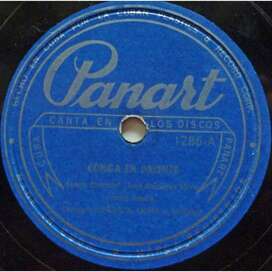
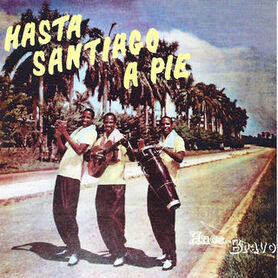
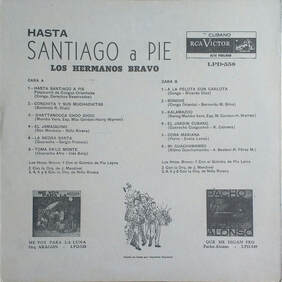
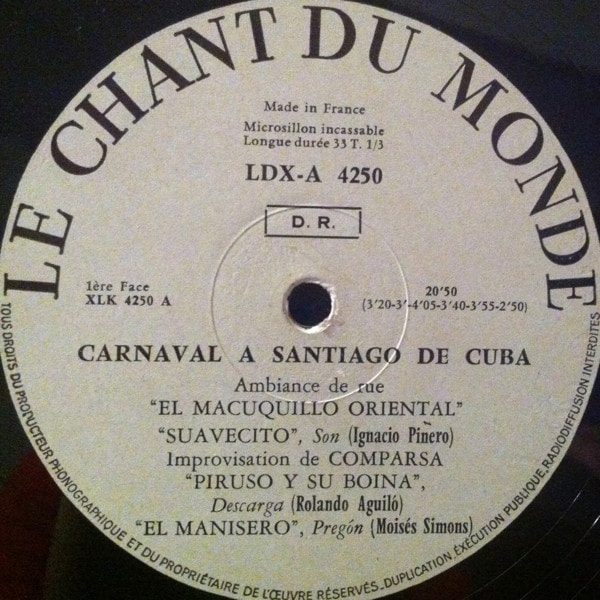
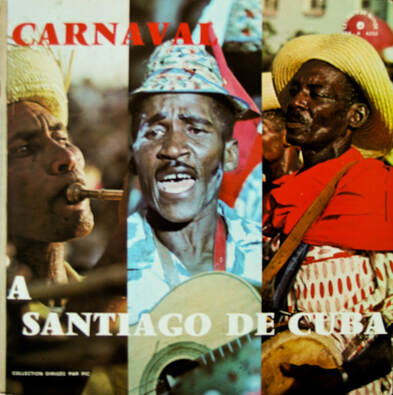
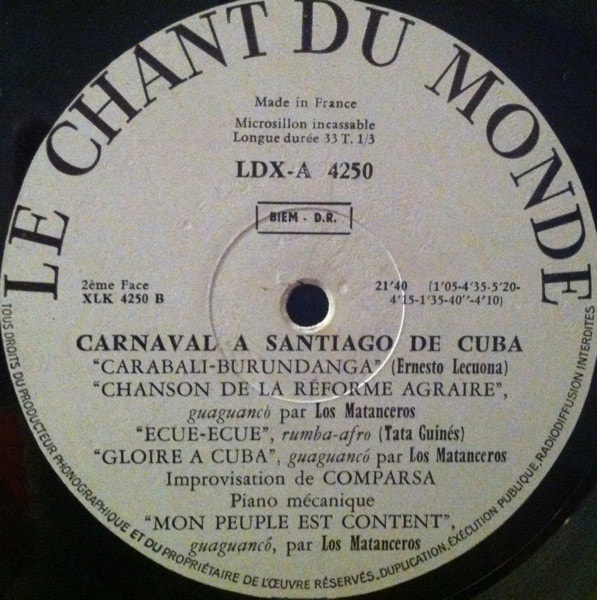
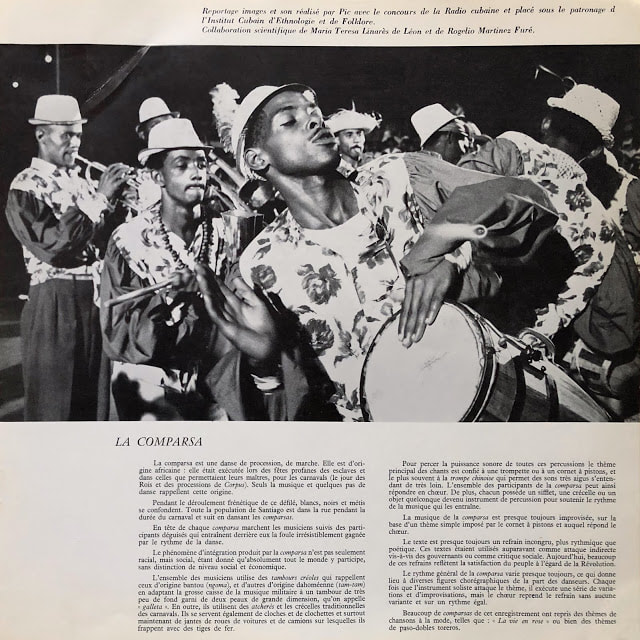
 RSS Feed
RSS Feed
